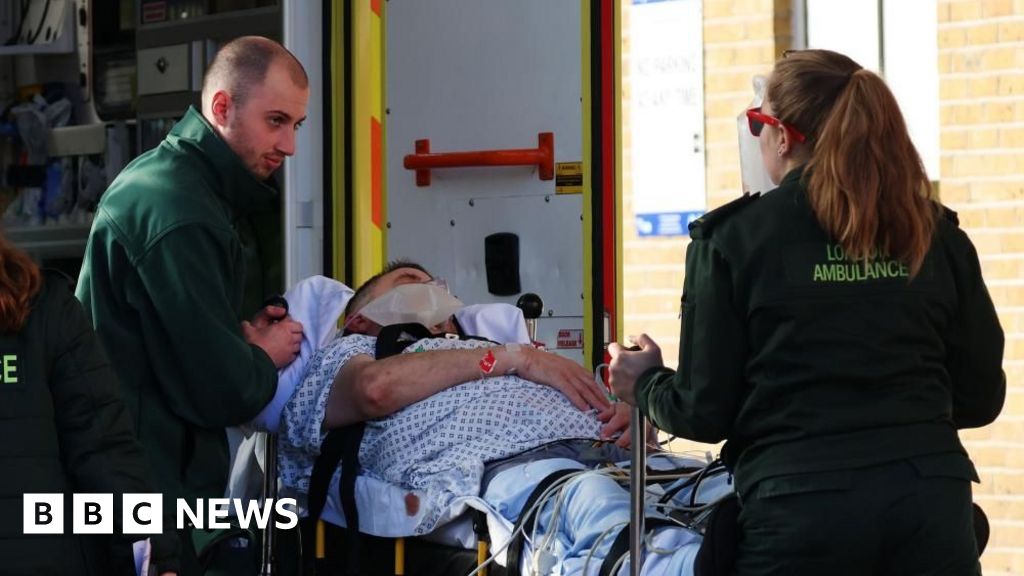Urgent Care in England: A Deteriorating Situation Post-Pandemic, Says Health Think Tank

A prominent health think tank has issued a stark warning regarding the current state of urgent and emergency care in England, stating that the system is performing "far worse" than it did prior to the COVID-19 pandemic. The report, released by the Health Foundation, highlights that the National Health Service (NHS) is currently facing unprecedented challenges, particularly this winter, as Accident & Emergency (A&E) waiting times have reached record highs.
The Health Foundation's findings stress that the government cannot solely attribute these delays to higher-than-normal flu cases. As the NHS grapples with these issues, the Department for Health and Social Care is expected to unveil an urgent care plan aimed at addressing the crisis in emergency services.
According to the latest report, the number of patients waiting 12 hours or longer in A&E after a decision to admit them to a ward hit an alarming high of over 60,000 in Januaryrepresenting 11% of emergency admissions. This marks a significant escalation compared to previous years and underscores ongoing systemic issues within the NHS. A persistent bottleneck in patient care remains evident, particularly with regards to delays in discharging patients from hospitals who are medically cleared to leave, further exacerbating pressures on A&E departments and ambulance services.
While the authors of the report acknowledge that flu cases in hospitals have been elevated, they note that the situation is not markedly worse than the winter of 2022-23; it simply took longer for those numbers to decline this year. Additionally, there has been a notable rise in cases of the winter vomiting virus, norovirus, although hospital admissions for respiratory syncytial virus (RSV) have remained consistent with historical trends. Meanwhile, COVID-19 hospital admissions continue to be relatively low.
Despite a slight overall decrease in emergency hospital admissions compared to last winter, as well as a reduction in the number of patients attending major A&E units, the report suggests that the NHS must brace itself for similar winters in the future. The Health Foundation cautions that attributing the crisis solely to seasonal factors, such as flu outbreaks, could offer a misleading sense of reassurance about the overall state of the healthcare system. Tim Gardner, the assistant director at the Health Foundation, emphasized that an annual winter crisis should not be seen as inevitable, calling for the government to prioritize addressing the root causes of these persistent issues.
In response to the report, a spokesperson for the Department for Health and Social Care acknowledged the pressures facing hospitals, stating, "Despite our actions to protect patients during the colder months, including vaccinating more people than last winter, we know hospitals are feeling the strain. Annual winter pressures should not automatically lead to an annual winter crisis." The department outlined its measures for tackling these challenges, which include the resolution of junior doctors' strikes and the implementation of the countrys first RSV vaccine.
The Royal College of Emergency Medicine has also weighed in, asserting that there is a "clear roadmap" for improvement. The impending urgent and emergency care plan, alongside a comprehensive 10-year strategy for the NHS, presents a crucial opportunity for the government to enact the much-needed changes to the healthcare system. In a separate announcement, the Department of Health and Social Care revealed that it has exceeded its target for increasing the number of hospitals in England that allow patients to view appointments through the NHS app. The target of 85% was surpassed, reaching 87%, a significant increase from 68% last July. This development is expected to enhance patient access to healthcare and communication, resulting in 12 million fewer letters being sent since July and 1.5 million fewer missed appointments. Officials claim that these advancements are instrumental in reducing waiting lists and ultimately saving taxpayer money.
























